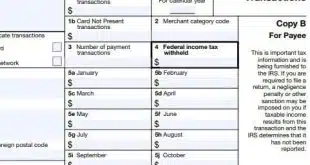The torrent of press releases promoting this new mobile-banking technology or that new mobile-banking service usually references, either implicitly or explicitly, the consumer as the end user. But small businesses represent a far more receptive user group for mobile-banking services, including bill payments, according to a new report from Boston-based Aite Group LLC. The report draws on findings from several Aite surveys, especially one in November 2007 of 303 small businesses and another of 16 of the 50 largest U.S. financial institutions conducted between July and September of 2008. Aite selected a subset of 147 small businesses to answer further questions about mobile banking. Thirty-five percent of the businesses said they were likely or extremely likely to check account balances using mobile devices in the next six months if such services were offered, and 4% said they already use such services. Corresponding figures were 25% and 2% for intra-bank funds transfers and 25% and 1% for mobile bill payments. Based on a sample of 500 credit and debit card holders Aite surveyed earlier this year, senior analyst Nick Holland tells Digital Transactions News that small businesses are in some cases nearly 10 times more willing than consumers to try mobile banking. “It was about 3% [of consumers] that were interested in bill pay over mobile,” he says. The reason for that receptivity isn't too hard to discern. Consumers regard mobile banking as “nice to have,” whereas busy small-business owners and employees can make a case for “need to have,” according to Holland. “It's the ability to deal with mundane tasks on the fly, and not be tethered to a desk,” he says. Financial institutions, however, only now seem to perceive that demand. Asked in this year's survey to rate the evolution of their small-business customers' demand for mobile banking today, with 1 being very low and 5 being very high, 69% of respondents characterized demand as average, 25% assessed it as very low to low, and 6% rated it as high to very high. Asked to assess how demand was 24 months earlier, 93% of the bankers rated it as low to very low and only 7% ranked it as average. Acting on that demand could yield lucrative fee revenue for financial institutions, but impediments include competition and the need to devise mobile services differentiated from consumer offerings, according to Aite. While many small businesses expect such services to come from the nation's top five banks, Aite's data show a surprising number of business owners expect their local banks and even credit unions to be offering mobile banking. Expectations were lowest for regional banks, the report says. Tech-savvy entrepreneurs frequently gravitate to the biggest banks, according to Aite, while small banks win at one-to-one customer service and therefore have a tool to promote online banking, a precursor to mobile banking. Regional banks lack the geographic footprints and brand pull of the top banks and also the “community feel offered by smaller banks,” the report says. Meanwhile, a few specialty tech vendors such as San Jose, Calif.-based MShift Inc., which since 2001 has focused on providing mobile-banking services to credit unions, have helped make credit unions competitive in the mobile market, Holland says.
Check Also
If Top Card Execs Must Testify, So Should Merchant Leaders, CCCA Opponents Argue
[Editor’s note: Originally posted Feb. 15, this article is #1 in Digital Transactions News’ countdown of 2024 …




